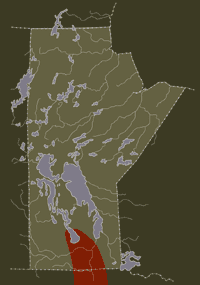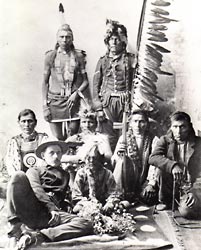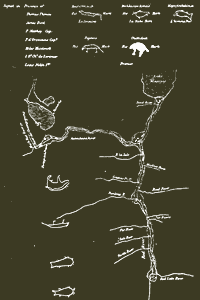Fur Trade and European Influence: 1737–1820

Map of Manitoba Tall Grass Prairie - circa 1800
By the mid-1700’s, many Europeans had made contact with Aboriginal people living in the Tall Grass Prairie region of Manitoba. According to Syms and Pettipas; the local natives became involved in commercial trade with these first Europeans by providing furs, trade routes and pemmican to the Companies in exchange for guns, traps, horses, beads and ceramics. “By the 1780’s the new groups like Pequis began to cultivate small plots of land urged by Missionairies”, (Pettipas et Syms, 1990: 79).

Photo of “Company Man” with Local Natives
The fur trade brought a new nation “the Métis”. This nation originated in the east and its roots were based on the intermarriage of local nations with the French and English fur traders and settlers. Many Métis settled along banks of the rivers or were employed fulltime by the fur trade. In 1812 the first of the suffering crofters of Scotland arrived in the “Assiniboia” region which was some 116,000 sq. mi. (300,416 sq. km) purchased by Lord Selkirk for the Hudson Bay Co. Its head quarters were at Ft. Douglas at the forks of the Red and Assiniboine rivers. The purpose of the settlement was to ease the suffering of the starving in Scotland and to establish a farming base to provide provisions for the H.B.C trade. This settlement led to increased growth and power of the Métis, as well as a growing hostility within the populations.

Map of Red River conveyed to Earl of Selkirk in 1817